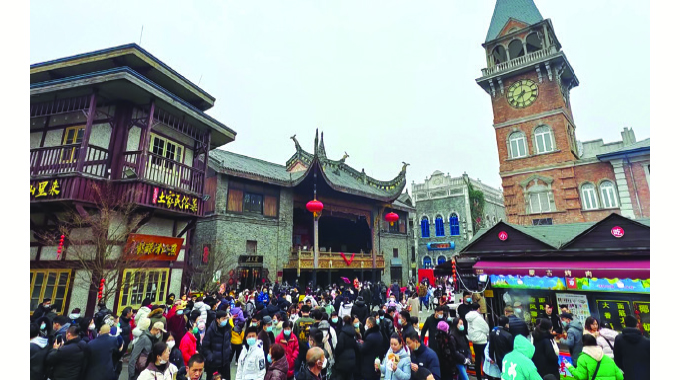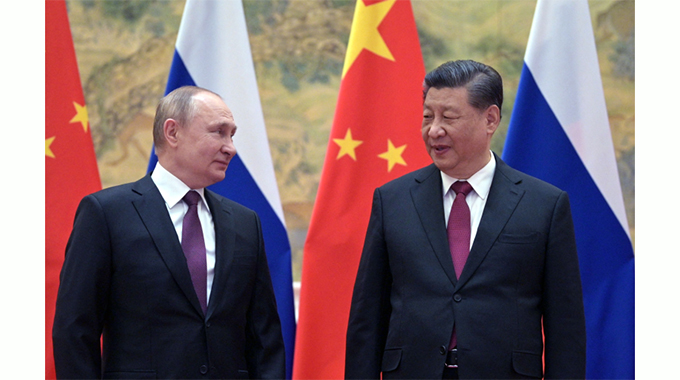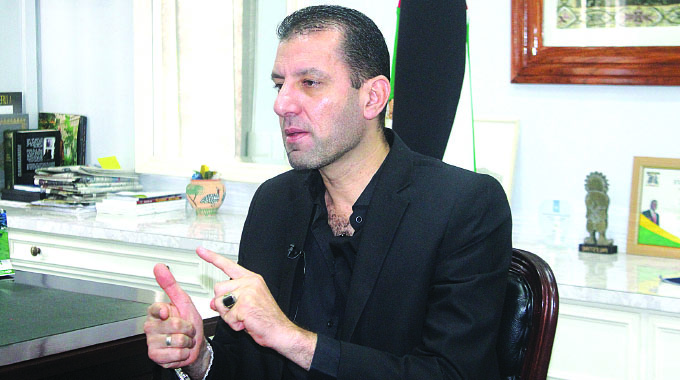3 years on, Wuhan embraces bustling Chinese New Year

BEIJING. – For many local residents in Wuhan, Central China’s Hubei Province, which reported the first Covid-19 outbreak in China three years ago, the Chinese New Year in 2020 was an unforgettable one as it coincided the moment when the city imposed a lockdown to cut off the coronavirus transmission.
Three years later, after the country accumulated experiences in fighting the epidemic and continuously adjusted its anti-Covid measures, the metropolis on the banks of the Yangtze River is witnessing again the joyful and bustling holidays.
The lion and dragon dance performances along the East Lake Greenway, a major scenic spot in the city, attracted many tourists and local residents on the second day into the 2023 Chinese New Year holidays with crowds applauding warmly, as the number of tourists from outside the city has been increasing in recent days. The city received in total 1.8 million of visits as of Sunday afternoon – the first day of the Chinese New Year – achieving the total revenues from tourism of 1.28 billion yuan ($188.7 million), an increase of 15.68 percent and 21.17 percent, respectively, over the previous year, according to local statistics.
Hundreds of thousands of people lined up this week outside the Yellow Crane Tower, the city’s iconic landmark that was temporarily closed during the Chinese New Year in 2020 as part of the city’s epidemic prevention and control measures. In the east square of the Yellow Crane Tower, some of classic plays of Han Show, referring to elegant Chinese traditional culture presented in the creative and thrilling form of live performance, were staged, and from the Chinese New Year’s Eve, about 60 percent of the visitors to the tower were from outside Wuhan.
The joyful hustle and bustle in 2023 strikes a sharp contrast from the images of empty and quiet streets during the Spring Festival three years ago, which also became a reminder for local residents about how hard Chinese people have been fighting the epidemic with confidence and solidarity.
A 34-year-old local resident surnamed Wang said the festival atmosphere was palpable in shopping malls with red lanterns, decorations and joyful background music. “In cinema, we can finally enjoy the movie with popcorns and milk tea, like we did before the epidemic started,” she said.
“I used to have many New Year wishes in the past, but now, after the COVID, I only wish that we, our family, can stay healthy and safe,” she said. “I cherish much more the time of family reunion.”
During the 76-day lockdown in the early 2020, Wuhan struggled to save lives and contain the virus, while maintaining the daily lives of ordinary people, a strategy that Chinese top epidemiologists said to “suffocate the virus within Wuhan.” The city was therefore dubbed a “heroic city,” whose sacrifice paved the way for the quick recovery of the country.
Solidarity and hard work helped the country weather three years of arduous struggle against Covid-19, allowing it to let go of the fear and uncertainty that came with the coronavirus.
Some local residents in Hubei Province said that they are not afraid of the virus now like they used to be but they remain cautious by wearing masks and paying attention to social distancing as well as hand hygiene.
Wang Wei, a social worker in Wuhan, who has been working in a local community in the past few years who fought the epidemic on the frontline, said on Wednesday that this year’s Chinese New Year is much better than those in the past few years, as family members finally get together. “Now we cherish the family time. Nothing matters more than the whole family getting together and staying healthy,” she said.
Like many of her co-workers, Wang said earlier that they were exhausted every day in the early days of the lockdown when residential compounds were sealed off. Throughout the three years of arduous fight against the epidemic, social workers like her sacrificed their time of accompanying their beloved ones such as parents and children for serving local communities.
Some Western media outlets reported that local residents celebrate this Year of the Rabbit in Wuhan with fireworks, flowers and offerings to the loved ones they have lost during the epidemic.
“Now, the most important thing for us is to move on and live the moment, hoping those who passed away rest in peace,” a local resident surnamed Liu said.
This year’s Spring Festival is the first one after China optimised its Covid-19 response and downgraded the management of the epidemic.
Over the past three years, the country has never stopped exploring more effective ways to contain the spread of the virus and optimize epidemic control while striking a balance between protecting public health and lives and ensuring social and economic development. Such accumulated experiences also laid out a solid foundation for people to enjoy one of the most important traditional Chinese festivals with their families, observers said.
“I feel that people are relaxed, really enjoying the holidays, as we also see the first wave of infection passed since the country optimized its Covid-19 measures,” said Chen Jingyuan, a local resident in her 30s.
“After these years of combating Covid-19, I realized that people’s mindset is changing, for example, many pay much more attention to their health and hope to live an easy life.”
Three years after the start of the epidemic, local residents in Wuhan are moving forward steadily, expressing hope for the future while celebrating the start of the new year, a vivid reflection of Chinese people embracing a new beginning and welcoming their cities’ return to normal. – Global Times







Comments